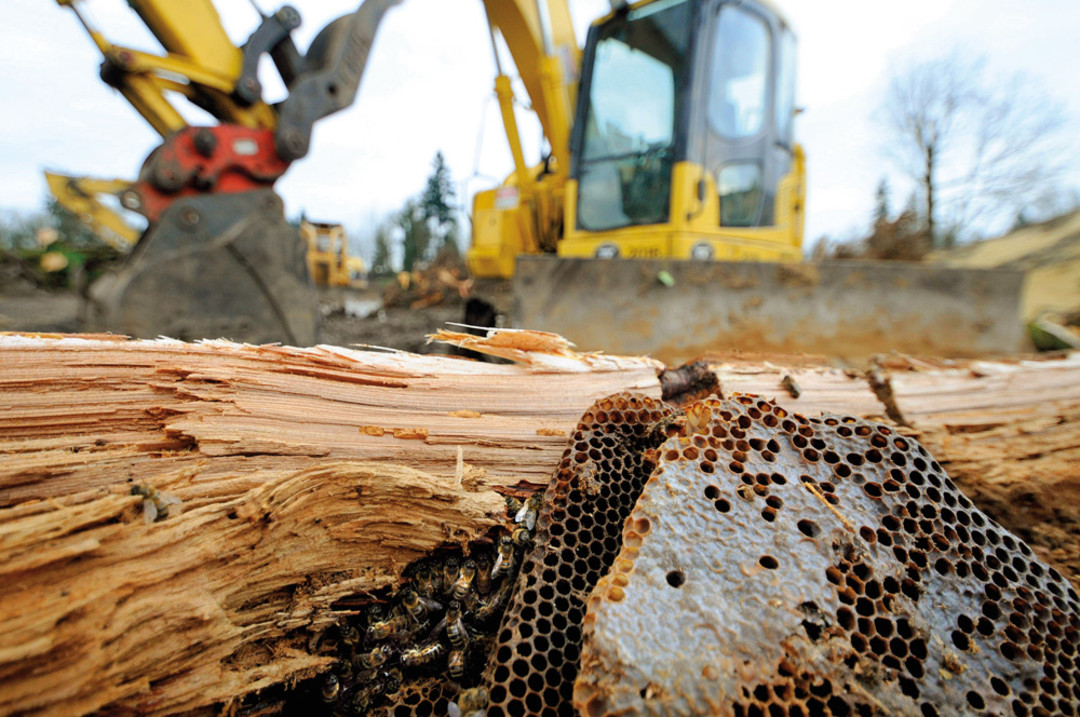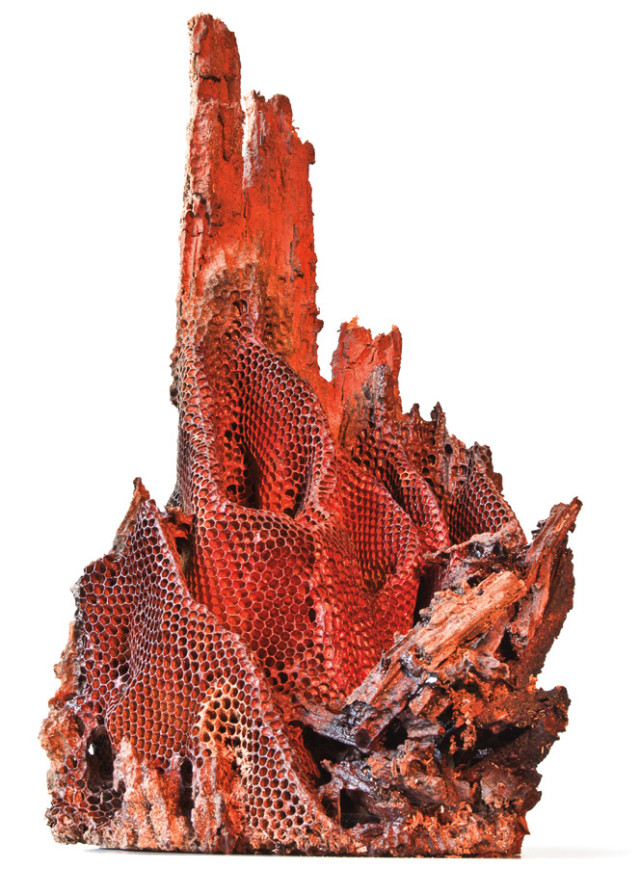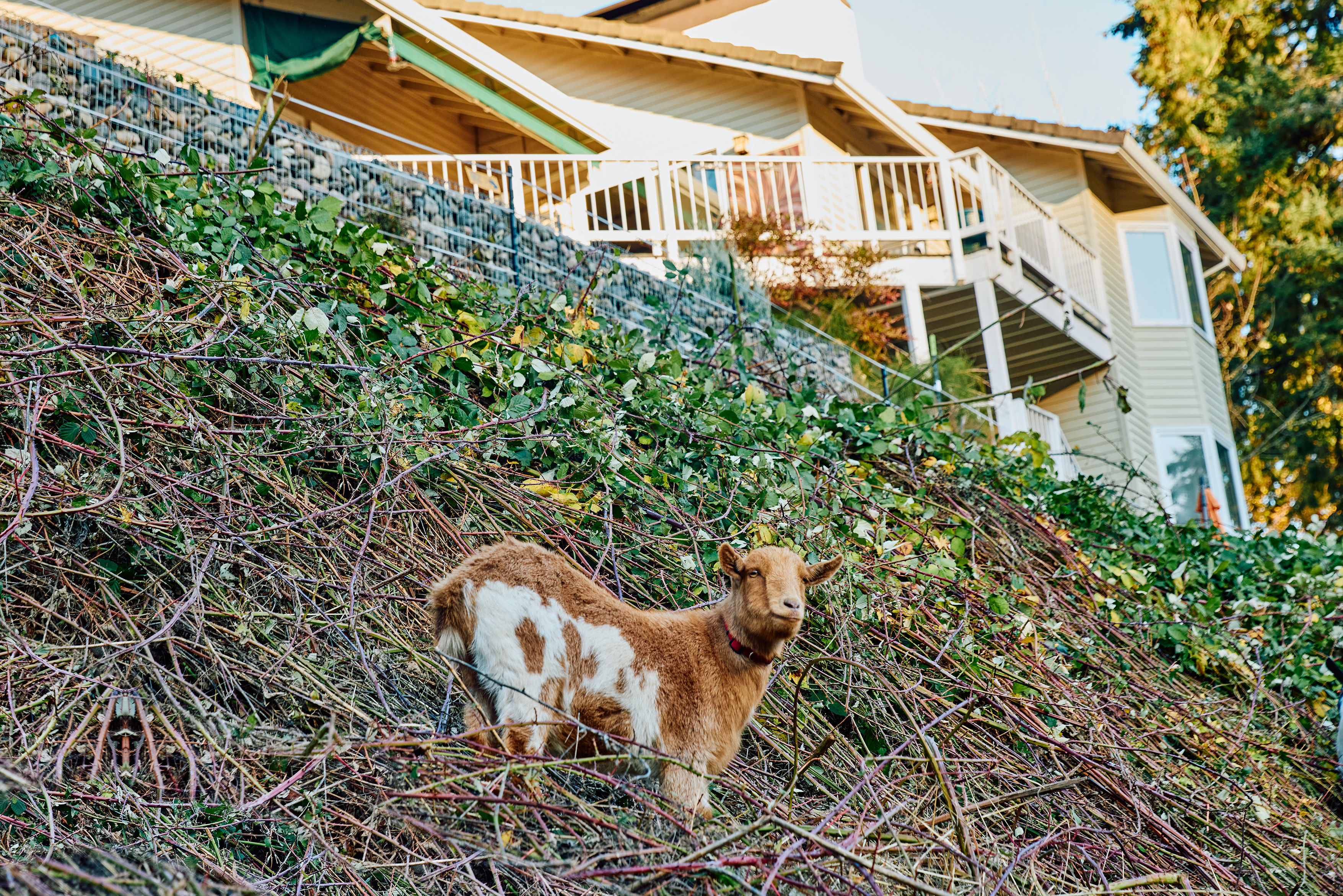Adventures in the Quest to Save the Feral Honeybee

Image: Courtesy Ryan Lebrun
Nick Glitner thought it would be a normal day at the construction site, clearing felled trees and debris from a lot on NE Sandy Boulevard. He revved up his chainsaw and started cutting a large cedar log—until it spat bees at him. Like a piñata full of angry, flying candy, the log housed a giant hive of honeybees. Rather than exterminate them, he called in Damian Magista.
Along with running Portland’s Bee Local Honey (he tends roughly 30 hives on Portland rooftops), Magista is a regular white knight for “feral” honeybees—colonies encountered by construction workers and tree crews. Magista discovered a four-year-old colony inside the log.

Welcome to “Harrenhal,” a salvaged honeycomb fortress.
Image: Courtesy Ryan Lebrun
“People don’t quite know what to do with them,” says Magista of feral bees. “We gently collect them and put them in an apiary.” It’s win-win: Magista adds yet another distinctive flavor to his commercial honey supply; the bees get to survive. Magista also sees his rescue missions as teaching opportunities on threatened pollinators. “When we are out on a swarm call, inevitably a small crowd gathers,” he says. “The event becomes a classroom.”
This rescue offered more surprises than most. When Magista peered inside the log, he noticed a plug of honeycomb. He carefully extracted an “astonishing architectural marvel” made by the bees. The honeycomb castle (which he dubbed Harrenhal, in honor of Game of Thrones’ most ominous fortress) now sits in his workshop like a trophy for his rescue efforts. The construction-site bees, meanwhile, are alive and well in Damascus.
“We could just ignore them, or we can move [the swarm] to a safe place out in the country where they’ll thrive and pollinate people’s farmland,” Magista says. “I opt for saving them.”




